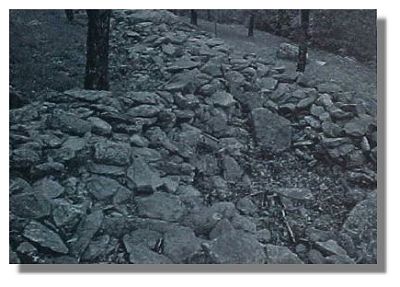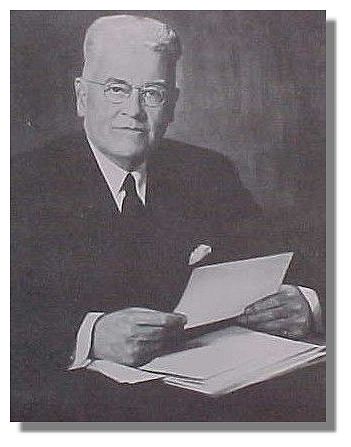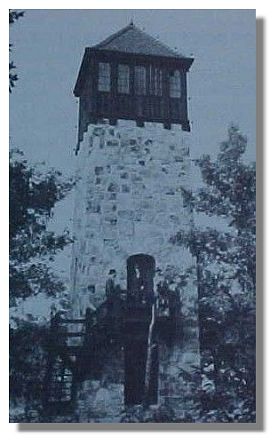| |  |
|
FORT MOUNTAIN
The Fort is on the National Register of Historic Places

The ancient fort of unknown origin atop Fort Mountain
Although numerous theories abound about the origin of the rock-walled fort from which the mountain derives its name, nobody actually knows who built it, or when, or why.
Careful archeological examinations of the site have found no evidence that a battle ever was fought there. No tell-tale items such as buttons, coins, fragments of tools, etc. were found to point to the identity of the builders. Perhaps the origin of the structure will forever remain one of Murray County's unsolved mysteries.
Although descriptions of the ruins of the fort vary greatly, the plaque on the mountain reads: "The Land on the Crest Of This Mountain 2832 Feet Above Sea Level, containing an ancient fort 885 feet in length was given to the State of Georgia for establishment of Fort Mountain State Park by Ivan Allen a public spirited citizen in the year of 1934."
Constructed of stacked rocks without mortar, the wall runs in an almost zig-zag line from a steep precipice on the east side of the mountain to a steep precipice on the west side. The base of the wall originally was about 12 feet. Although the stacked stones now are only two to three feet high, originally they must have been stacked higher. The wall contains at fairly regularly spaced intervals some 29 pits similar to later-day foxholes. A gateway opening in the wall is thought to have led to a nearby spring. Visitors debate whether the fort had watchtowers.
Ivan Allen, Sr., was born in Dalton, March 1, 1876. As a child he was intrigued by the old fort and bought the site in 1926. He originally hoped to build a hotel near the fort but decided instead to preserve the mountain's crest forever as a state park. In addition to his donation of 219 acres, other citizens of north Georgia raised money to acquire additional acreage increasing the size of the park to 1,897 acres.
The road across the mountain was completed in 1935. Rock blasted from the mountain to clear the roadbed was used to build the three original rock structures at Murray County High School. The new roadway linking Chatsworth and Ellijay was named the Henry Grady Highway.
By the end of 1935 the stone tower was completed and the state park had been established. The Civilian Conversation Corp built most of the park's facilities.

Ivan Allen, Sr.,
donated the land where the old fort is situated
to become Fort Mountain State Park.

Stone tower built in 1935, Fort Mountain
| | |  | |






